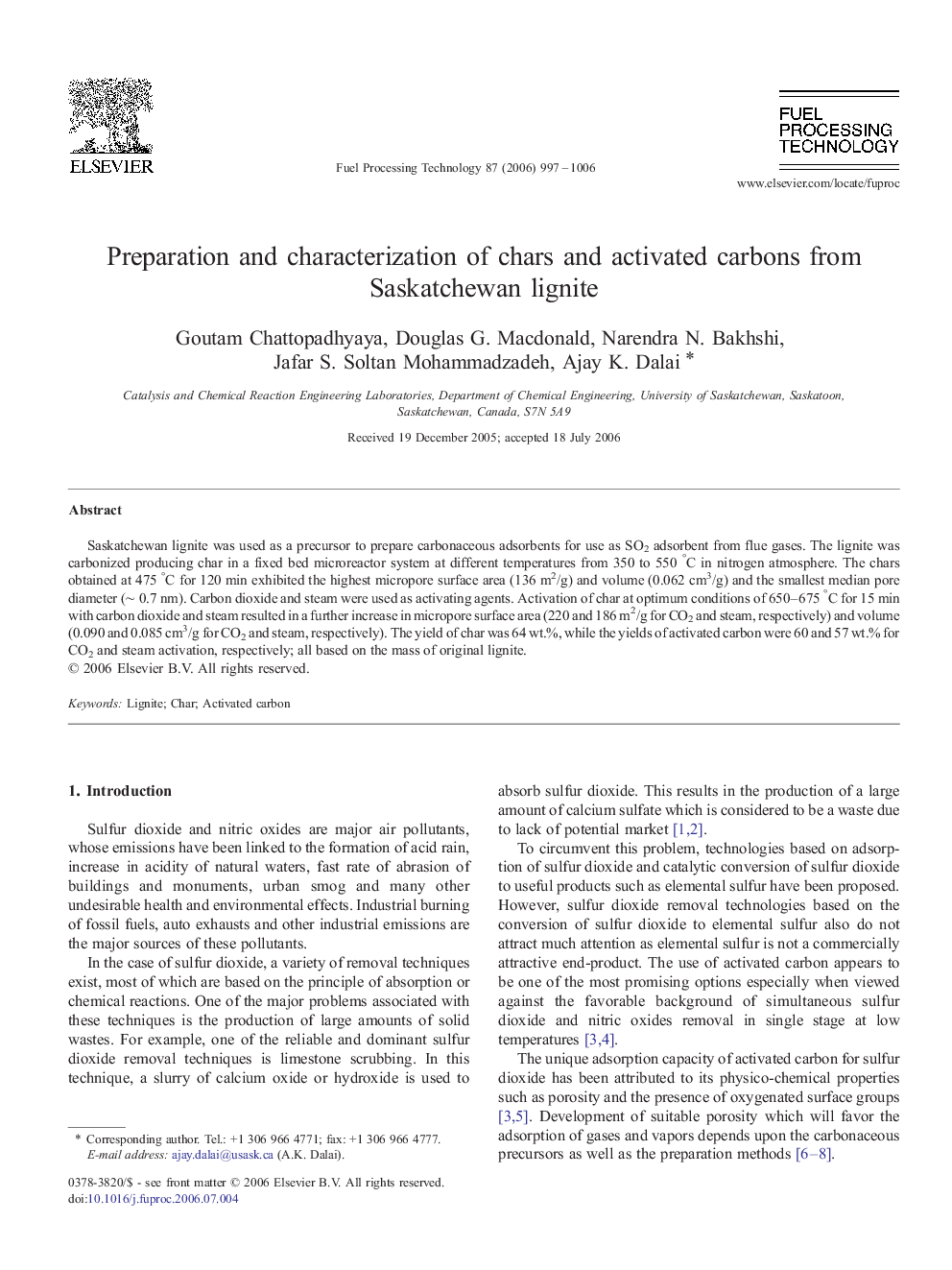| Article ID | Journal | Published Year | Pages | File Type |
|---|---|---|---|---|
| 211188 | Fuel Processing Technology | 2006 | 10 Pages |
Saskatchewan lignite was used as a precursor to prepare carbonaceous adsorbents for use as SO2 adsorbent from flue gases. The lignite was carbonized producing char in a fixed bed microreactor system at different temperatures from 350 to 550 °C in nitrogen atmosphere. The chars obtained at 475 °C for 120 min exhibited the highest micropore surface area (136 m2/g) and volume (0.062 cm3/g) and the smallest median pore diameter (∼ 0.7 nm). Carbon dioxide and steam were used as activating agents. Activation of char at optimum conditions of 650–675 °C for 15 min with carbon dioxide and steam resulted in a further increase in micropore surface area (220 and 186 m2/g for CO2 and steam, respectively) and volume (0.090 and 0.085 cm3/g for CO2 and steam, respectively). The yield of char was 64 wt.%, while the yields of activated carbon were 60 and 57 wt.% for CO2 and steam activation, respectively; all based on the mass of original lignite.
